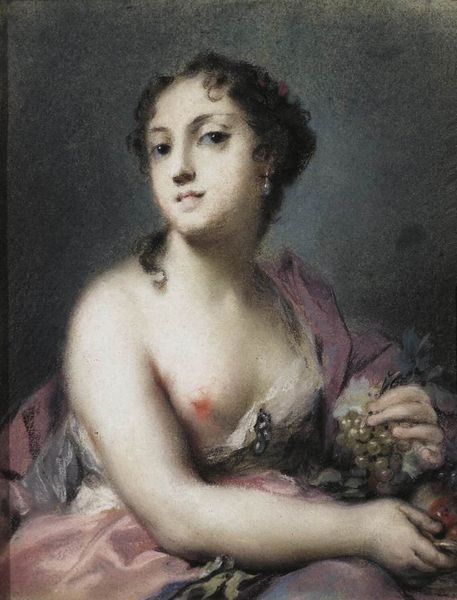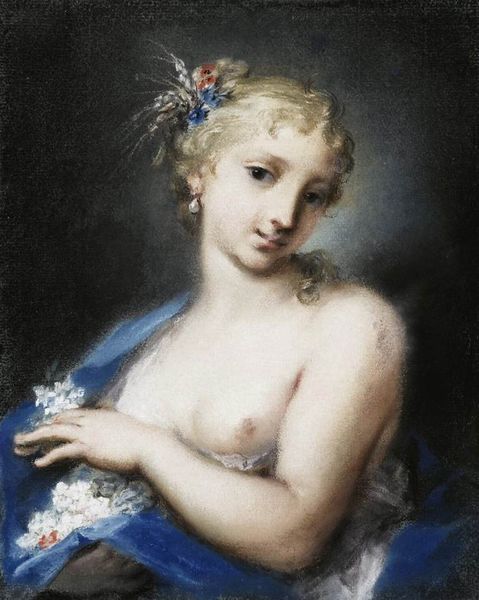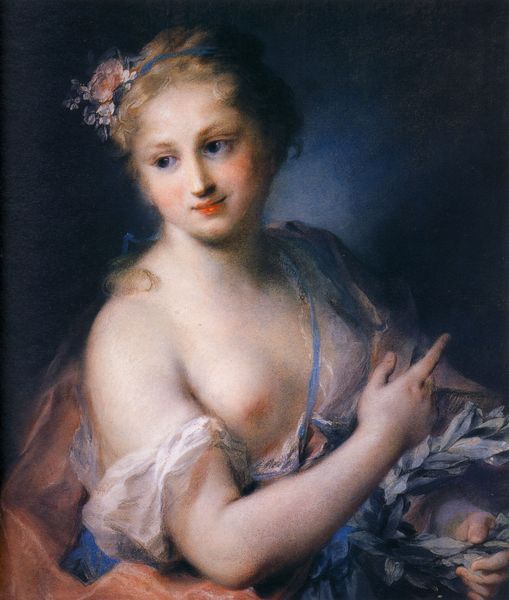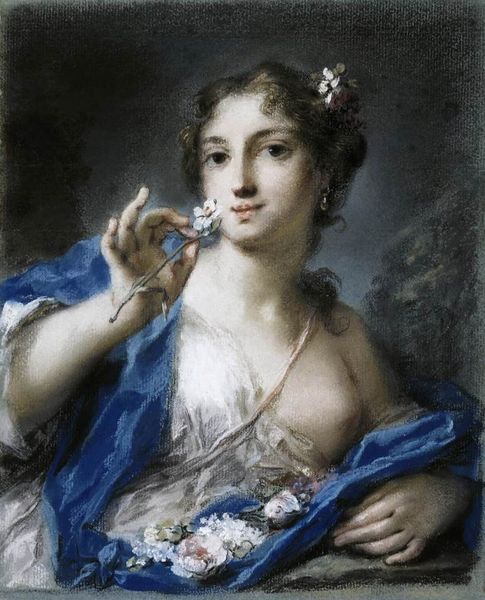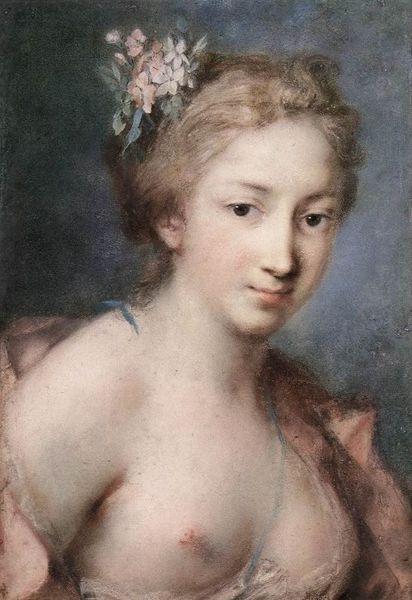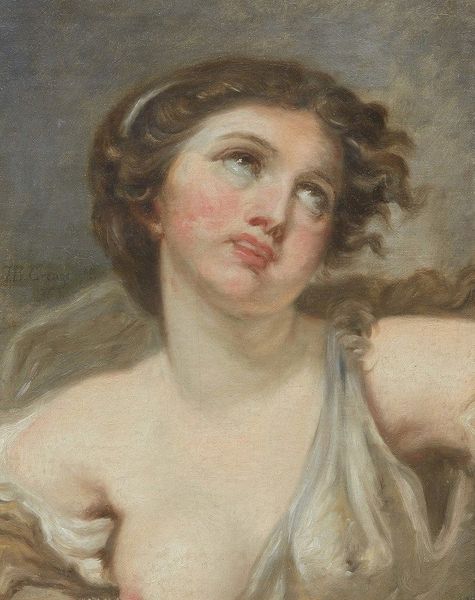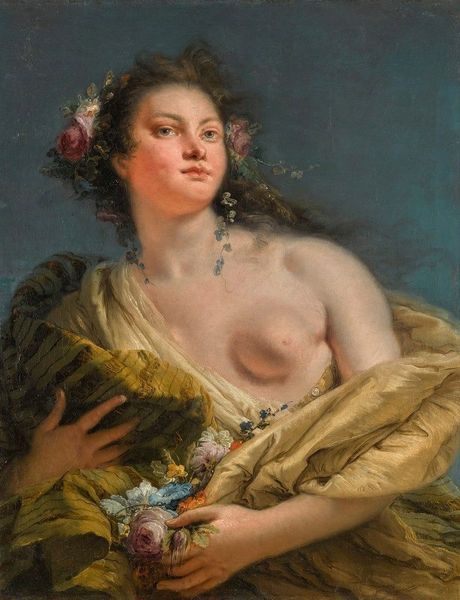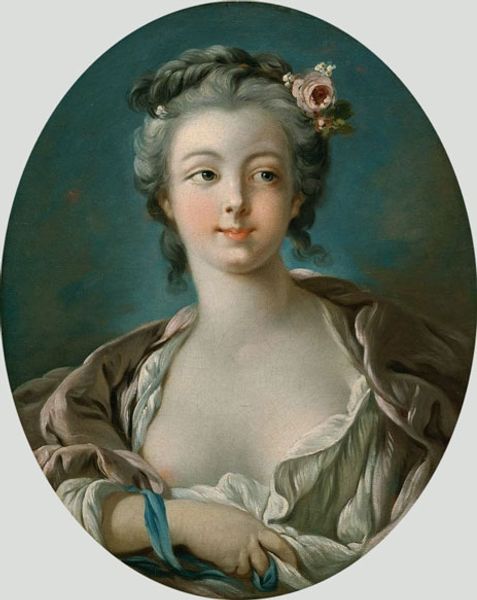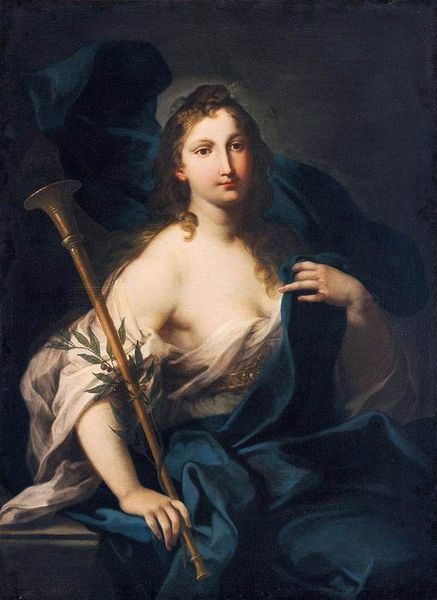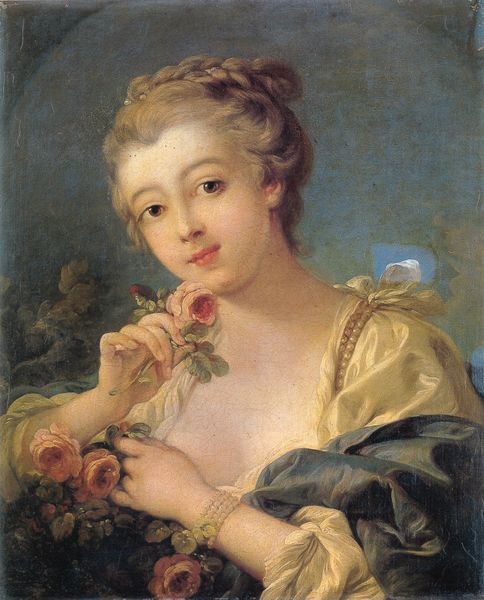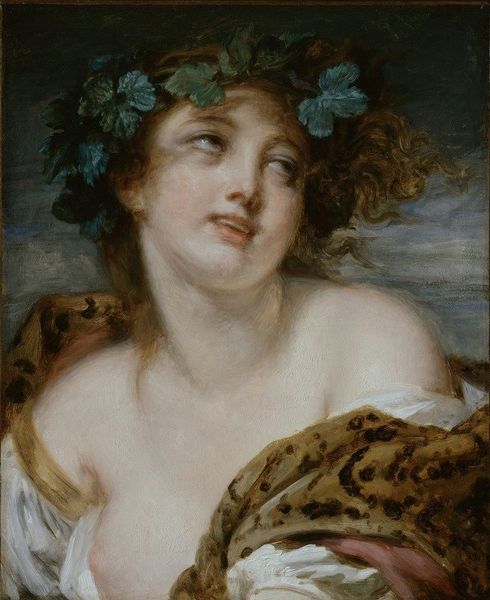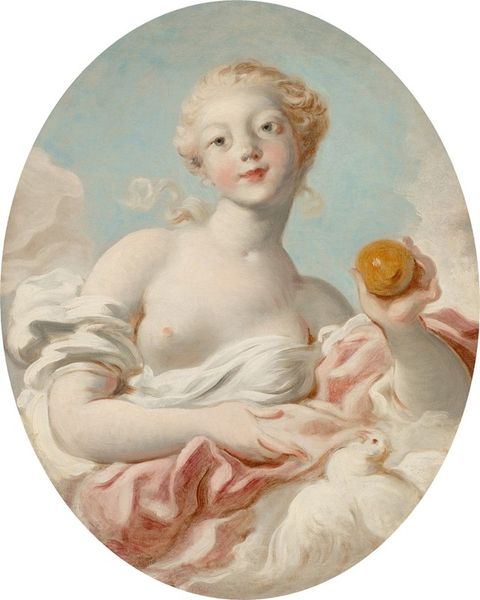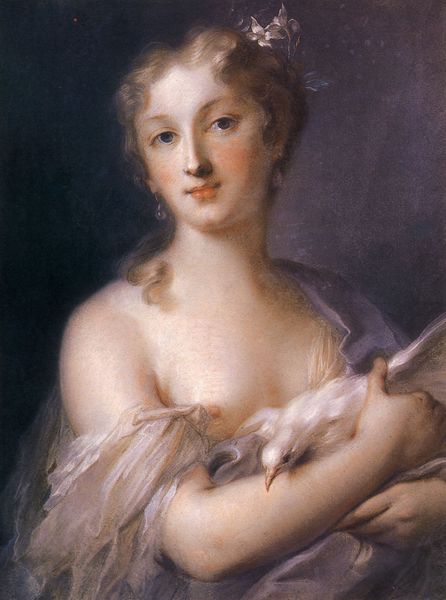
painting
#
portrait
#
allegories
#
painting
#
winter
#
nude
#
rococo
Copyright: Public domain
Curator: Here we have Rosalba Carriera’s "Winter," painted around 1725. It's currently residing here in the Hermitage Museum. What’s your initial reaction? Editor: Well, first, I’m struck by the artist's skillful manipulation of the pastel medium. It has a beautiful, almost velvety texture. And there’s an interesting tension between the implied luxury, the ermine fur, and the subject's apparent vulnerability. Curator: Yes, that vulnerability is central. Carriera was known for her portraits, and "Winter" is an excellent example of the allegorical portraits so popular in the Rococo period. It also references back to representations of women from the classical world. Think about how she’s framed, that tilt of her head. Editor: I find myself focusing on the means of production here, and Carriera was quite revolutionary. Pastel was considered more of a craft medium then, right? Her mastering it and using it for formal portraits challenges those established hierarchies. She's essentially elevating pastel as a material. Curator: Precisely! And Carriera herself occupied a fascinating social position. As a successful woman artist during the Rococo period, she challenged many social norms, but also catered to the aristocratic elite. It would be shown in private collections for a small set of important collectors, who’s gaze, then, would be what? It reflects certain ideas about femininity and nature at that time. Editor: Thinking about the materiality again, the fleeting nature of pastel reflects the temporary quality of the season. Consider how the pigment particles create a soft, delicate effect mimicking the way frost clings to surfaces, it really plays into the idea of ephemeral beauty, as well as its cost. It could be read that these works were about value, about expense, as much as capturing ‘winter’. Curator: It does invite those reflections, certainly. Carriera, like many artists of her time, navigated a complex web of patronage, aesthetic trends, and social expectations, particularly surrounding the role of women in art. The market played a big part in the types of subject that came to fruition and by who. Editor: It highlights how artistic expression is inevitably tied to the materials available, and of course, their cultural connotations. Curator: Indeed. A powerful reminder that images and artistic labor don't exist in a vacuum. Editor: Exactly, looking at it in those terms means we're encouraged to understand that the process of its creation influences how it looks today.
Comments
No comments
Be the first to comment and join the conversation on the ultimate creative platform.
